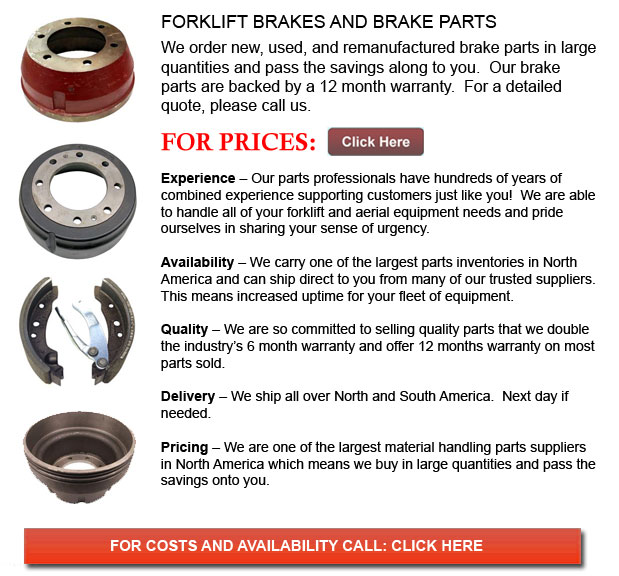
Forklift Brakes - A brake in which the friction is provided by a set of brake pads or brake shoes that press against a rotating drum unit called a brake drum. There are some particular differences among brake drum types. A "brake drum" is normally the definition given if shoes press on the interior exterior of the drum. A "clasp brake" is the term used to be able to describe whenever shoes press next to the exterior of the drum. Another kind of brake, referred to as a "band brake" utilizes a flexible belt or band to wrap around the exterior of the drum. Where the drum is pinched in between two shoes, it could be known as a "pinch brake drum." Like a typical disc brake, these kinds of brakes are quite uncommon.
Early brake drums, previous to nineteen ninety five, needed to be constantly modified in order to compensate for wear of the drum and shoe. "Low pedal" can cause the required adjustments are not performed sufficiently. The motor vehicle can become hazardous and the brakes can become useless when low pedal is mixed together with brake fade.
There are several different Self-Adjusting systems meant for braking presented nowadays. They can be classed into two separate categories, the RAI and RAD. RAI systems are built in systems that help the tool recover from overheating. The most well known RAI manufacturers are Bendix, Lucas, Bosch and AP. The most famous RAD systems consist of Volkswagen, VAG, AP, Bendix and Ford recovery systems.
The self adjusting brake will normally only engage whenever the forklift is reversing into a stop. This method of stopping is acceptable for use where all wheels utilize brake drums. Disc brakes are utilized on the front wheels of vehicles nowadays. By functioning only in reverse it is less possible that the brakes would be adjusted while hot and the brake drums are expanded. If adjusted while hot, "dragging brakes" can happen, which increases fuel consumption and accelerates wear. A ratchet device that becomes engaged as the hand brake is set is another way the self adjusting brakes may operate. This means is just suitable in applications where rear brake drums are utilized. If the emergency or parking brake actuator lever goes over a particular amount of travel, the ratchet advances an adjuster screw and the brake shoes move toward the drum.
There is a manual adjustment knob placed at the base of the drum. It is typically adjusted through a hole on the opposite side of the wheel and this involves getting underneath the lift truck using a flathead screwdriver. It is of utmost significance to move the click wheel correctly and adjust each and every wheel equally. If unequal adjustment occurs, the vehicle can pull to one side during heavy braking. The most efficient method so as to guarantee this tedious task is accomplished safely is to either lift each wheel off the ground and hand spin it while measuring how much force it takes and feeling if the shoes are dragging, or give every\each and every one the same amount of manual clicks and then perform a road test.
![]() Click to Download the pdf
Click to Download the pdf
Forklift Parts
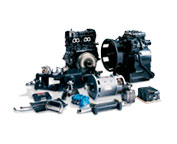


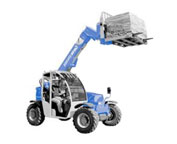


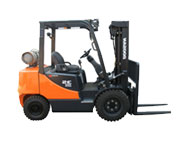
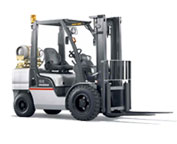
Lift Parts Express
TOLL FREE: 1-888-695-7994
Grand Rapids, Michigan
forkliftpartsgrandrapids.com
Email Us
About Us


